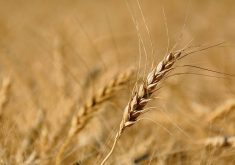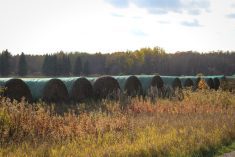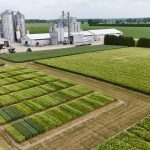Forage crops in Alberta are maturing well heading into the first cut, while Manitoba’s forages suffer from excessive precipitation.
Because of Alberta’s likely surplus, there could be some forage trading between the two provinces. Saskatchewan is also expecting an above-average year, according to forage crop specialists.
Alberta’s forage crops have benefited from just the right amount of rainfall throughout the growing season, making it an “ideal June,” said Ken Ziegler, forage beef specialist with Alberta Agriculture and Rural Development at Rocky Mountain House.
Read Also

Brazil to reap record soy crop in 2025/2026, increase exports
Brazil’s Conab said the country will reap a record soybean crop of 177.6 million tons in the 2025/2026 harvest year, according to data released on Thursday.
The first cut in southern Alberta is well on its way, and in the rest of the province, crops are reaching shot blade, the stage of development that comes before harvest.
Crops in shot blade should be harvested in the next 10 days, he said.
The mild Alberta winter also encouraged crop growth, Ziegler said. With only one real cold snap in the middle of January, cows didn’t need to eat as much feed to keep warm, which kept carryover supplies high.
“The downside is that the guys selling feed are going to be stuck between a rock and a hard place. There’s been a fair bit of carryover from last year, and with the new crop coming, that carryover is going to become less and less valuable,” said Ziegler.
There’s also the potential for grain feed that was seeded early to make it into the grain sector, said Ziegler, but there is also the possibility that excess forage supply could be sent to the other Prairie provinces.
“It’s always an option to bring in hay,” said Glenn Friesen, business development specialist for forages with Manitoba Agriculture, Food and Rural Initiatives at Carman. “It’s the producer’s prerogative if they want to pay for the shipping.”
The first cut in Manitoba is looking average to below-average in terms of quality and yield, he said. Much of the crop was cut before last week’s rain, but there are also concerns that the native hay might mature too much before producers can cut it, considering the ground is so wet from recent rains.
A dry fall last year and a warm April in Manitoba also hurt Manitoba forage crops. Those two factors allowed crops the chance to develop, but when frost returned it killed off some of the developing forage, he said.
However, Friesen still said he was “cautiously optimistic that things can improve over the season” as Manitoba can have as many as four forage cuts in a year.
In Saskatchewan, “all areas have adequate moisture levels at this point,” said Michel Tremblay, forage specialist with Saskatchewan’s agriculture ministry in Regina. He also added that he expects an above-average crop.
However, pest problems in the southeast of the province could be an issue for forage crops. Disease issues also exist because of the high moisture and humid conditions in Saskatchewan over the past two years, he said.
The first cut in Saskatchewan is underway, just as weather has started to clear up. Some localized areas in the province are experiencing a delayed harvest because of wet weather, Tremblay said.
However, “as far as supplies go, feed supplies are adequate right now. With a likely above-average crop coming on, feed prices should be relatively stable,” he said.
— Commodity News Service Canada is a Winnipeg company specializing in grain and commodity market reporting.















